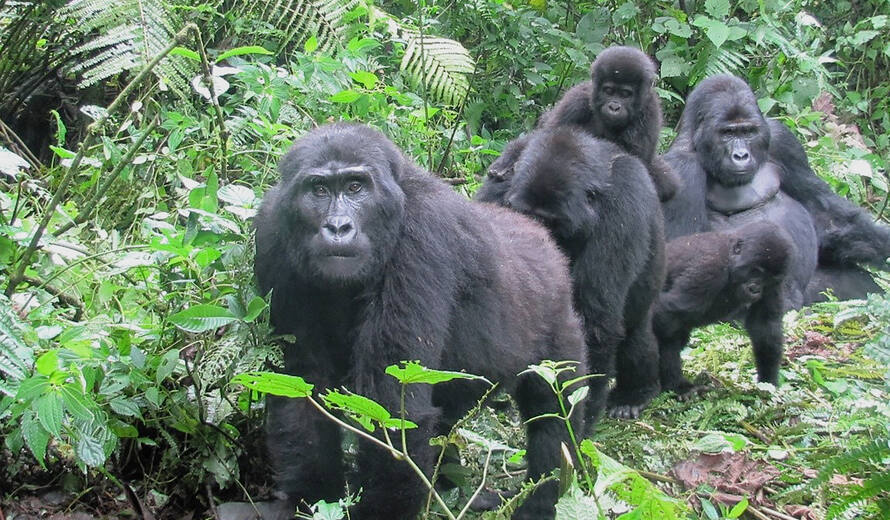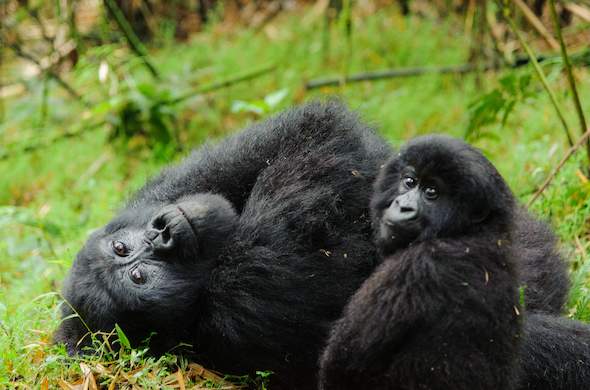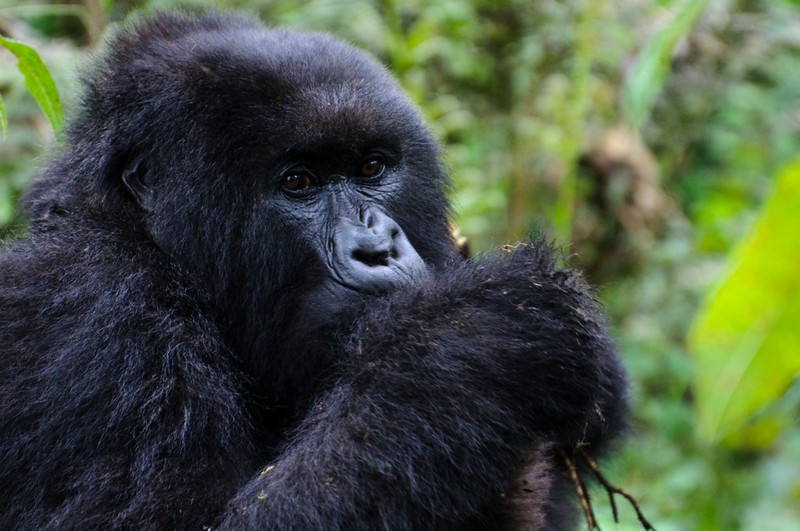Where do mountain Gorillas Live
Where do mountain Gorillas Live, Mountain Gorillas are a severely endangered primate species, prompting inquiries regarding their habitat. The climate in which they reside and the fact that Mountain Gorillas cannot endure captivity. Mountain gorillas in zoos are actually western lowland gorillas. The reasons for the survival of one subspecies over another are difficult to ascertain. This explains why all Mountain Gorillas inhabit the wild exclusively.

Mountain gorillas inhabit elevated forested regions, ranging from 8,000 to 13,000 feet in altitude. They possess denser and more abundant fur than other large apes. The fur enables their survival in an environment where temperatures frequently fall below freezing. As humans encroach increasingly upon the gorillas’ habitat, the gorillas have been compelled to retreat further into the mountains for extended durations, subjecting them to perilous and occasionally lethal conditions.
The previously grim prospects for the subspecies have improved in recent years due to conservation initiatives. Notwithstanding the persistent civil strife, poaching, and expanding human population, both populations of mountain gorillas have had numerical growth.
Mountain Gorillas inhabit Uganda, Rwanda, and the Democratic Republic of Congo.
The final population of Mountain Gorillas exists in three nations, encompassing four National Parks: Bwindi Impenetrable Forest and Mgahinga Gorilla National Parks in Uganda, Volcanoes National Park in Rwanda, and Virunga National Park in the Democratic Republic of Congo. These are the exclusive locations where one can observe Mountain Gorillas in their native environment.

Mountain Gorillas in Uganda
Mountain Gorillas can be observed in Uganda’s Bwindi Impenetrable Forest and Mgahinga Gorilla National Parks. The existence of these two sites accounts for Uganda’s status as home to the largest population of Mountain Gorillas globally. This is also the reason it is highly esteemed for gorilla trekking excursions and gorilla conservation initiatives.
To access the habitat of Mountain Gorillas, one must visit the designated national parks. To observe Mountain Gorillas, one must acquire a Gorilla permit that grants access to their dense forest habitat. A gorilla tracking permit can be obtained from the Uganda Wildlife Authority via a safari firm such as Gorilla Trekking in Africa on your behalf.
Gorillas of the Mountain Species in Rwanda
Mountain Gorillas are observable in Volcanoes National Park in Rwanda. The Park is located in the northwestern region of the country, adjacent to Uganda’s Mgahinga Gorilla National Park and the Democratic Republic of Congo’s Virunga National Park.
Dian Fossey conducted her pioneering gorilla research in Rwanda’s Volcanoes National Park, significantly contributing to the conservation of gorillas and other primates. Gorilla licenses in Rwanda can be acquired through the Rwanda Development Board, the governmental authority responsible for issuing permits to observe the Mountain Gorillas of Rwanda.

Mountain Gorillas in the Democratic Republic of the Congo
Gorillas can be observed in Virunga National Park, located in the Democratic Republic of Congo. The park adjoins Rwanda’s Volcanoes National Park and Uganda’s Mgahinga Gorilla National Park.
The Democratic Republic of Congo has seen prolonged internal strife; nonetheless, effective collaboration with Uganda, Rwanda, and other conservation partners has facilitated the research and preservation of the mountain gorilla habitat.
Although we have arranged Gorilla trekking excursions in both Uganda and Rwanda, we have not expanded into the Democratic Republic of Congo due to concerns over the security and safety of our guests and ourselves. Visiting their habitats allows for the observation of Mountain Gorillas in their natural environment.
Where do mountain Gorillas Live, Despite being an endangered species, conservation efforts for Mountain Gorillas have been remarkably successful, resulting in a population increase. This is remarkable work, and the organizations and institutions involved have demonstrated that action can indeed be taken for all other endangered and at-risk species of flora and fauna.
Recent figures indicate that 1,080 Mountain Gorillas inhabit the wild. This is favorable information as the 2003 census projected a population of 380 individuals. The population has more than doubled within a span of 15 years. Nonetheless, this does not imply that the dangers to their livelihood are entirely eradicated.
Local communities significantly profit from gorilla tourism, which has deterred them from intruding on gorilla habitats for agricultural land, timber, and hunting of other animals, occasionally resulting in gorilla fatalities from traps. Supporting gorilla tourism is a means of assisting to the protection of mountain gorillas. Revenue generated from these tourism activities immediately supports adjacent people and further facilitates the conservation and protection of the ecosystem.
